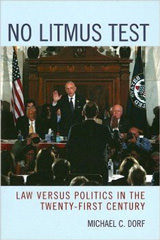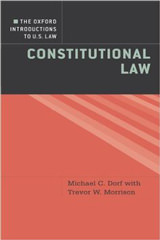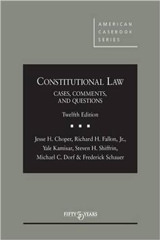The calls by President Donald Trump, Elon Musk, and their allies in Congress and the media for the impeachment of judges who have issued injunctions against various Trump administration policies have no likelihood of resulting in the actual removal of those judges. After all, to convict and thus remove an impeached judge requires a two-thirds vote in the Senate. If a federal judge actually took a bribe or committed some other clearly corrupt act, a bipartisan Senate vote to convict would be possible, but there is no chance that Democrats would join Republicans in voting to convict judges based on their substantive rulings, especially not rulings with which nearly all Democrats likely agree.
Indeed, one would hope that no member of the House would vote to impeach and no member of the Senate would convict a judge based on disagreement with the judge’s ruling. As Chief Justice John Roberts noted in an apparent rebuke of the president, “impeachment is not an appropriate response to disagreement concerning a judicial decision.” Disappointed litigants, the Chief Justice explained, should appeal.
Nonetheless, Republican House members have introduced articles of impeachment against various federal judges whose rulings they find irksome.
Meanwhile, last week House Speaker Mike Johnson suggested an alternative means of eliminating judges who rule against the Trump administration. Speaking at a press conference, Johnson said that Congress has “authority over the federal courts” and thus “can eliminate an entire district court.”
Although Johnson later appeared to walk back this suggestion for now, it warrants serious discussion. Eliminating a judgeship would not require a two-thirds vote in either chamber. A bill to do so should be subject to a filibuster in the Senate, but one can imagine Republicans disingenuously arguing that its primary purpose is to save money and thus that it qualifies for the reconciliation procedure that bypasses the filibuster—or simply eliminating the filibuster for ordinary legislation, as President Trump proposed during his first term.
But wait. Can Congress simply eliminate a district court judgeship and thereby circumvent both the high bar for impeachment and the provision of the Constitution’s Article III that provides life tenure for federal judges? (The text of Article III says judges “hold their offices during good behaviour,” a phrase long understood to mean unless and until they retire or are impeached and removed.) We can find some guidance in the constitutional text and past practice.
Constitutional Text and History
Article III vests the “judicial power . . . in one Supreme Court, and in such inferior courts as the Congress may from time to time ordain and establish.” The “time to time” language might be read to suggest that Congress can from time to time also dis-establish, i.e., abolish, lower federal courts it has previously ordained and established. And indeed, Congress has occasionally done just that. But over the course of the last 160 years, whenever Congress abolished a lower federal court, it reassigned the judges who sat on that court to other federal courts, thus ensuring compliance with the constitutional requirement of life tenure for federal judges. However, in a famous (or perhaps infamous) episode early in our history, Congress abolished lower federal court judgeships without reassigning the judges.
In the election of 1800, Thomas Jefferson won the presidency, and his Democratic-Republican Party won a majority in Congress. Before they took office, the outgoing Federalist Congress passed and President John Adams signed the Judiciary Act of 1801, which came to be known as the Midnight Judges Act. Among other things, it created a number of new federal circuit judgeships, which were promptly filled by Federalists. Once in power, the Jeffersonians enacted the Judiciary Act of 1802. It repealed various provisions of the Midnight Judges Act, including the new judgeships.
The Supreme Court never directly addressed the constitutionality of the 1802 Act’s elimination of occupied federal judgeships, but the Justices seemingly acquiesced in it. As a consequence of the repeal of the Midnight Judges Act, intermediate appeals were no longer heard by the judges appointed under it. Instead, appeals went to a circuit court consisting of one or two trial court judges and a Supreme Court Justice “riding Circuit.” In the 1803 case of Stuart v. Laird, the Supreme Court rejected the argument that Supreme Court Justices could not serve in that dual capacity consistent with the Constitution. Unsurprisingly, the Court rejected that argument because circuit-riding had been a feature of the federal judicial system from its origin in the Judiciary Act of 1789.
In rejecting the challenge to circuit-riding, the Justices tacitly accepted the 1802 repeal of the Midnight Judges Act. After all, if that repeal were unconstitutional, then there would be no need for circuit riding. Indeed, before the Supreme Court decided Stuart, individual Justices acquiesced in the 1802 repeal by riding circuit. Chief Justice John Marshall himself had sat on the circuit court in Stuart itself.
To be clear, Stuart v. Laird does not hold that it is constitutionally permissible for Congress to eliminate a federal judgeship without reassigning a sitting judge. Nor does any subsequent case. But, unfortunately, it does suggest the possibility.
Before leaving the nineteenth century, we need to consider the extraordinary steps taken by President Abraham Lincoln and Congress in 1863. As Georgetown Law Professor Martin Lederman recounted in a 2018 article in the Columbia Law Review (in footnote 360, which begins on page 394), the Lincoln administration defied a writ of habeas corpus issued by D.C. Circuit Judge William Matthew Merrick, effectively put the judge under military house arrest for several weeks, sought to withhold the judge’s salary, and then obtained legislation from Congress abolishing the court on which Judge Merrick and several colleagues sat and appointed loyalists to the court that took its place. The legislation was enacted over the objection that it violated the Constitution’s provision of life tenure for federal judges.
The Supreme Court never had occasion to rule on the constitutionality of the 1863 measures either, but, like the Marshall Court in Stuart v. Laird, it acquiesced in assertions of broad congressional power over the judiciary. The high (or, in my view, low) point came in Ex Parte McCardle in 1869, when the Supreme Court allowed Congress to eliminate jurisdiction over a habeas corpus petition that was already pending before it. The one saving grace was the Court’s suggestion in McCardle’s final paragraph that other means of securing a writ of habeas corpus remained open.
Desperate Measures
The foregoing brief history indicates that Speaker Johnson overstated the case when he asserted that congressional power to ordain and establish lower federal courts includes the power to “eliminate an entire federal district court.” Eliminating a federal court without reassigning its judges to other federal courts appears to violate the impeachment and life tenure provisions of the Constitution—even though no Supreme Court or other case definitively addresses the matter.
Meanwhile, even if we assume that the courts today would acquiesce in a congressional scheme to eliminate the courts on which sit judges with the temerity to follow the law rather than the diktat of the Trump administration, that is hardly a reason for Congress to attempt such a feat. Abolishing a judgeship because of a judge’s rulings should be attempted, if at all, only in the most dire emergency.
President Lincoln’s and Congress’s moves against Judge Merrick came in the midst of the Civil War and in response to rulings by the judge discharging soldiers from the Union Army on the ground that those who were under eighteen needed but did not have their parents’ consent to enlist. Even then, if the president and Congress concluded that such habeas rulings were a threat to the war effort, the better course would have been either to change the law requiring parental consent or suspend the privilege of the writ of habeas corpus. But at least Lincoln was trying to save the Union from a truly existential threat.
In language that seemingly invokes such a threat today, Speaker Johnson said that “desperate times call for desperate measures and Congress is going to act.” We do indeed live in desperate times. What makes them desperate, however, is not the fact that federal judges are issuing decisions invalidating presidential measures that violate numerous statutes as well as the constitutional protections of due process, freedom of speech, and separation of powers. The president whose actions Johnson would deploy chicanery to protect from judicial scrutiny is the existential threat to the survival of the United States as a constitutional republic.











